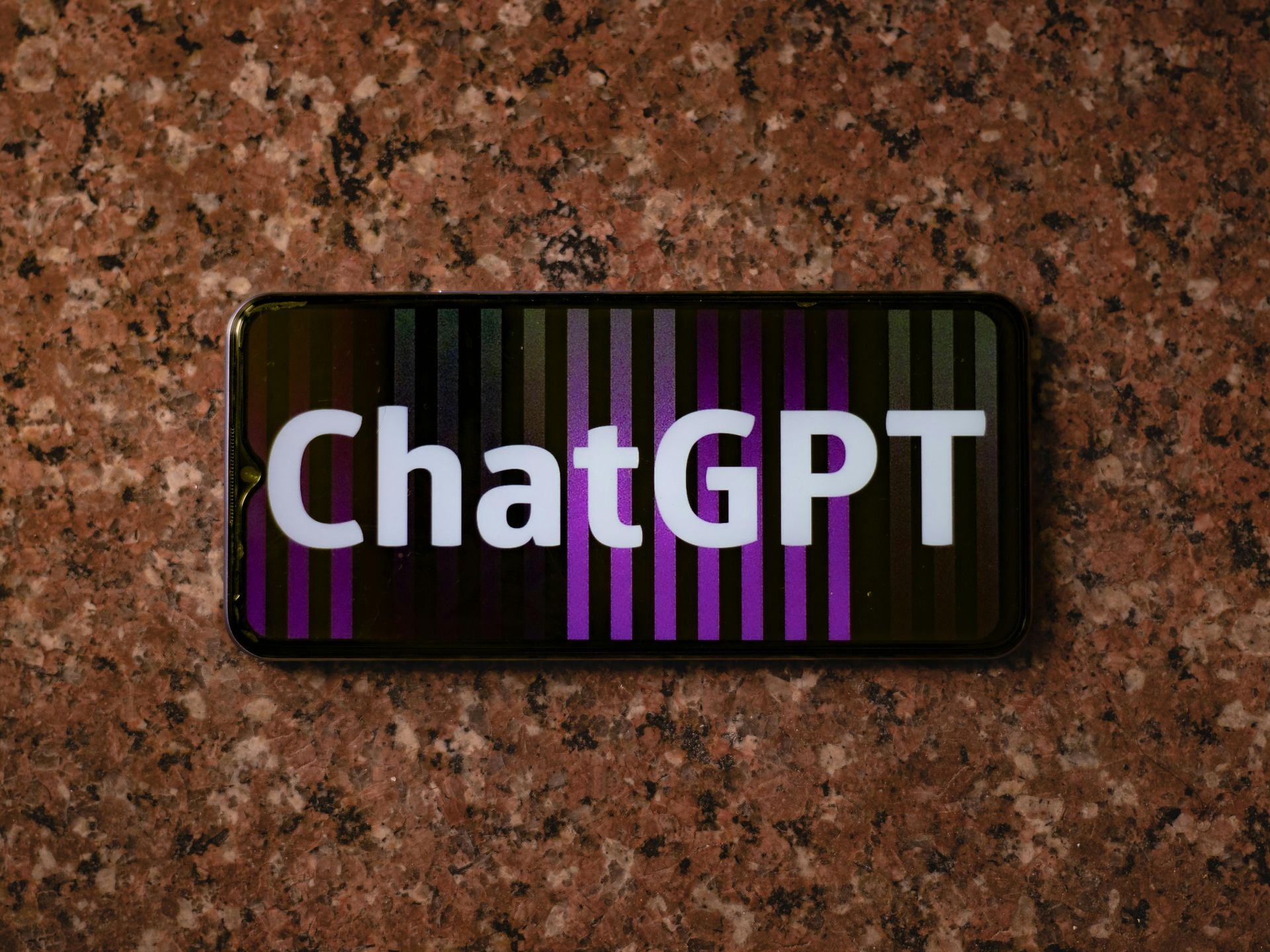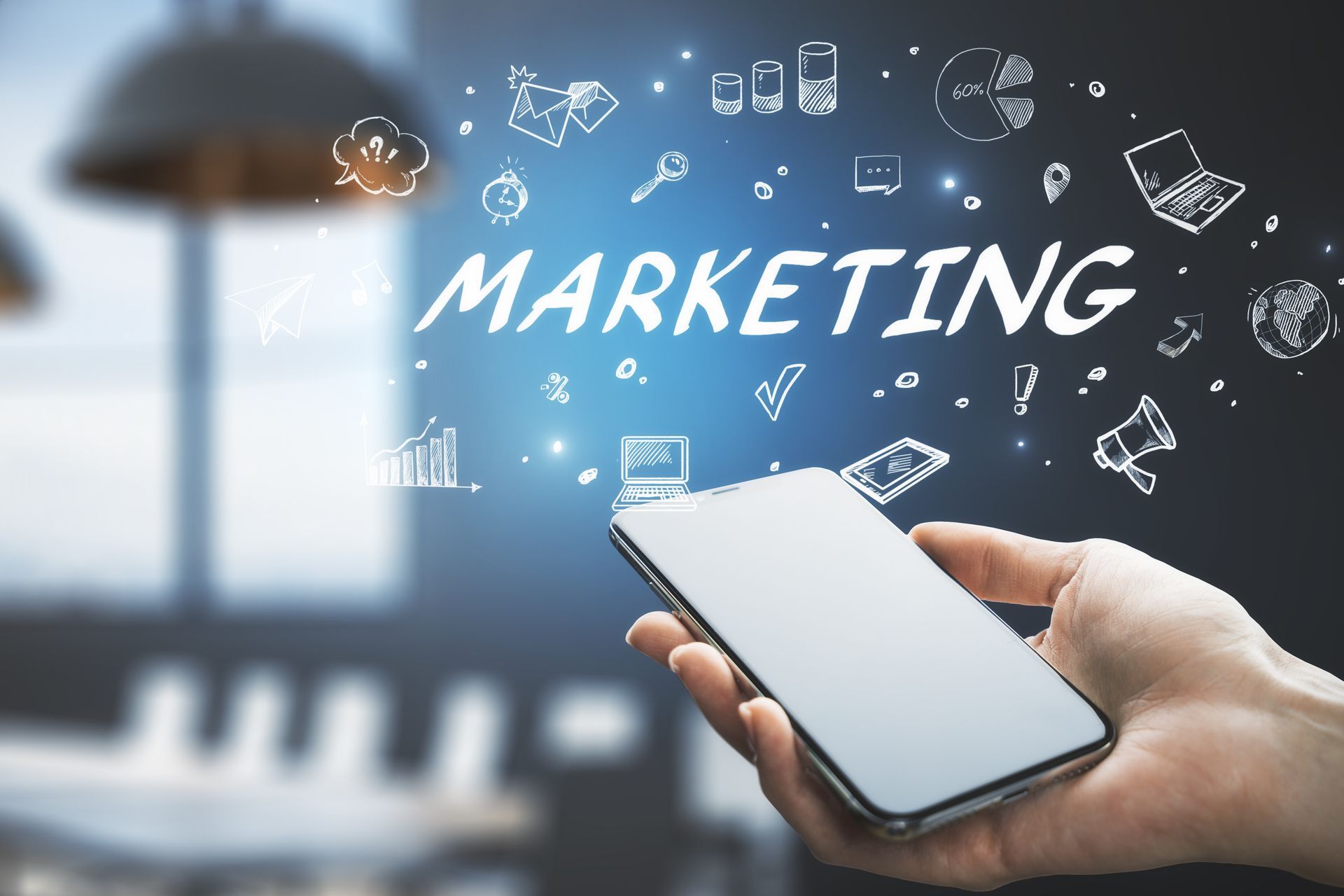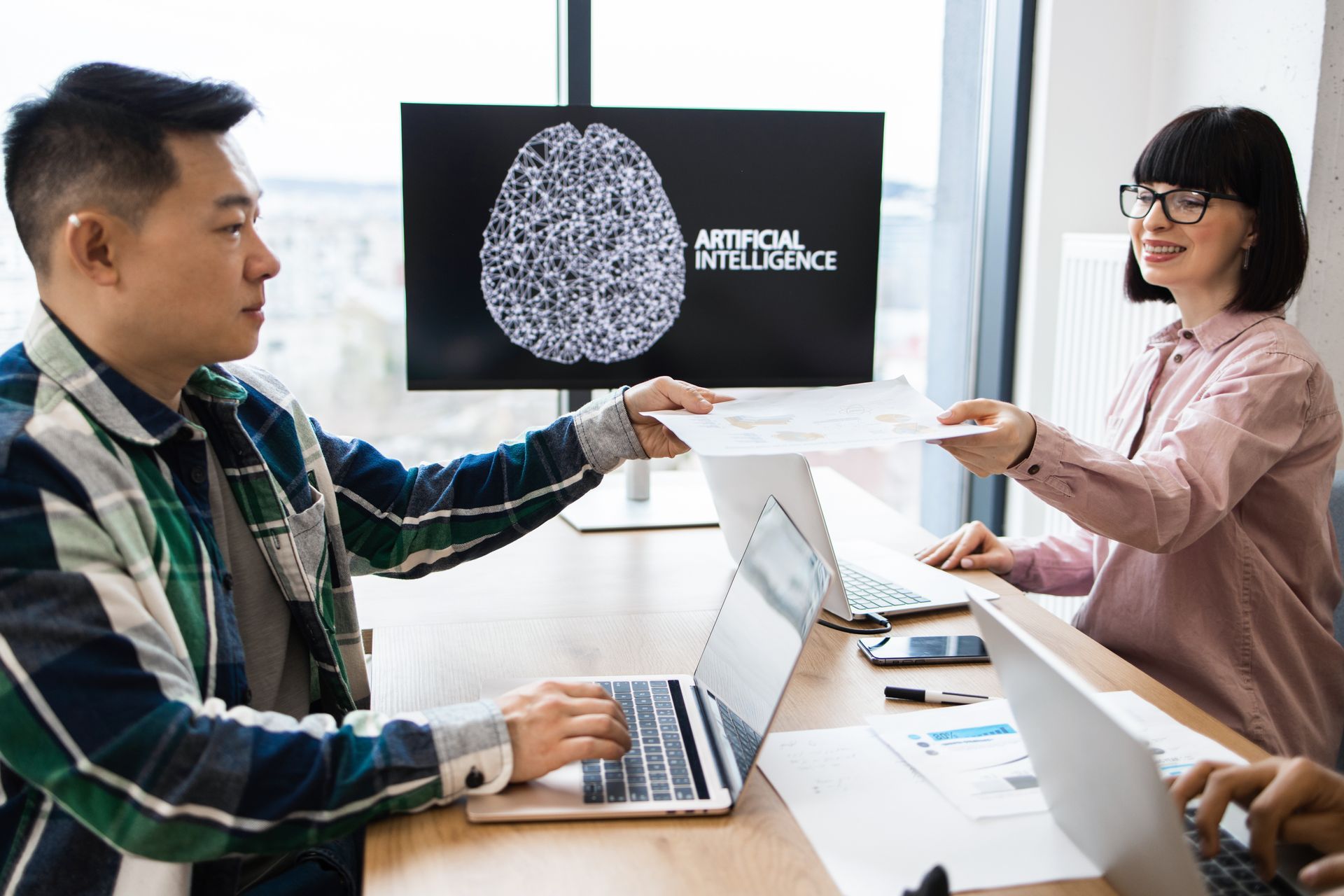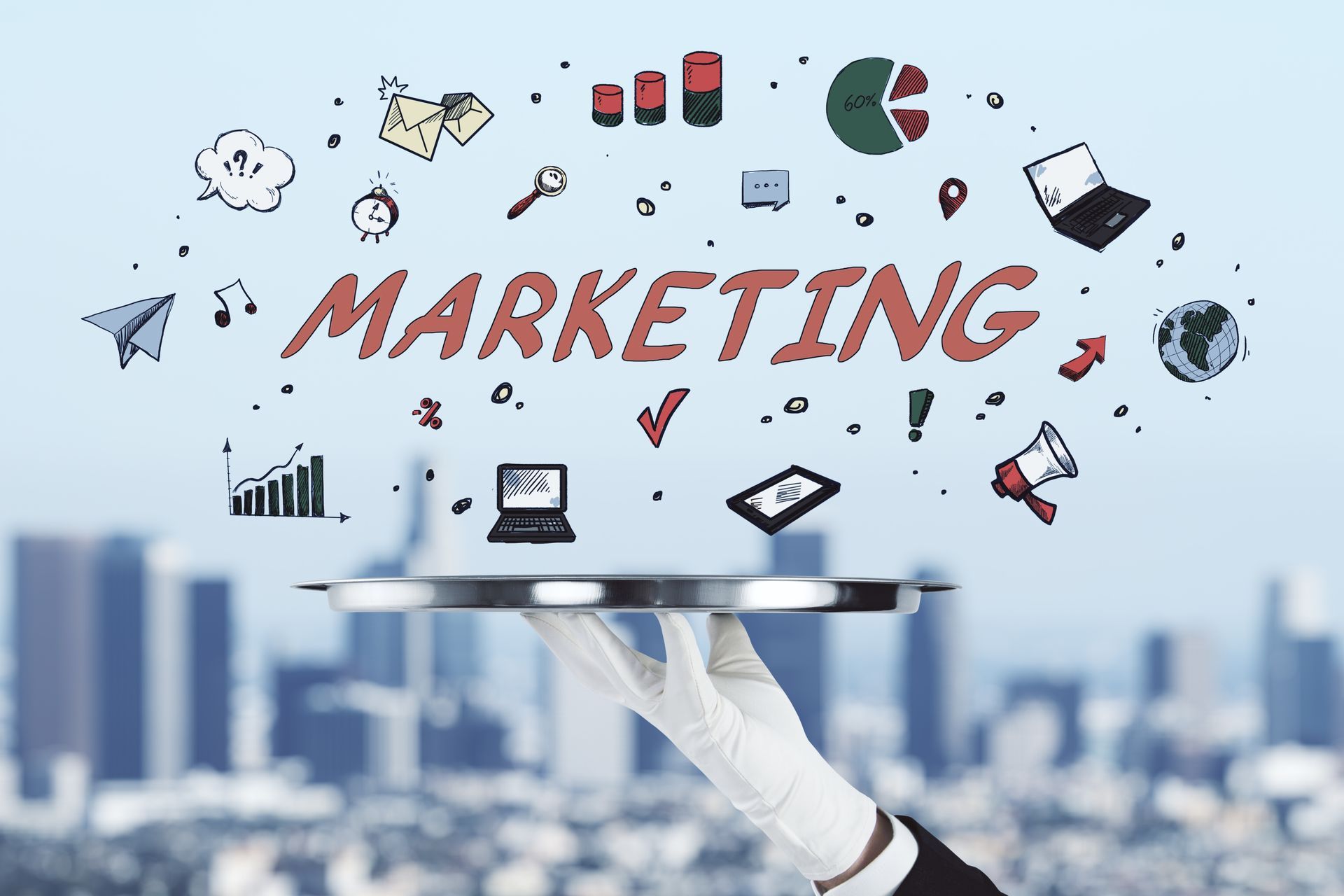How to Make Design Changes in CSS (Cascading Style Sheets)
January 2, 2024
A website is one of the first things users or customers will look for when researching your business.
Your website's design can either catch a user's attention or drive them away. Creating a visually cohesive and user-friendly site is essential to guaranteeing a successful website user experience.
Cascading Style Sheets (CSS) is a language that applies visual design styles across HTML elements. The benefit of using CSS is time it can save you. Rather than manually adding style attributes to individual HTML elements, CSS allows you to apply styles across elements on your site with just a few lines of code. You can use CSS to adjust the design across your websites on WordPress, Duda, Squarespace, and more.
For example, let's say we want all of your H1 tags to be bolded, 18pt font, and blue. You can quickly implement that new design across all H1 tags with CSS code. You can also changes other style elements such as background colors, margins, padding, and more. See the examples below.
Let's say we want all paragraph elements to use a royal blue text and to be aligned to the left. To do this, we would start with identify the tag we want to design for, which is p.
Next, we can add styles to them. In this case, we would use color for text color and text-align for the alignment. Make sure to add a semicolon between each line. Now, your paragraph elements will look like this:





In this next example, you have a button and want to adjust the text to be maroon. You also want to change the background color to be pink and round the corners, while also adding some padding. Just like with the last example, we'll start by identify the element we want to style, which is button in this case.
Next, add the styles, and see how your button design has changed.

To see more style options, you can visit W3 Schools, a great resource for your coding needs.
Feel like a lot of work?
Let us do it for you! Click below to see how we can help your
smallbusiness with your digital marketing.

The Human Touch in a Digital World: Why Brand Authenticity Wins In a digital marketplace saturated with content, consumers are developing a powerful filter for what they trust. They are increasingly tuning out picture-perfect, overly polished marketing in favor of something much more real: authenticity. At Y Associates , we believe that the most powerful brands are the most human ones. We help businesses navigate the exciting world of new marketing tools while ensuring their genuine voice is what shines brightest. Introduction: The End of the Perfection Filter For years, the goal of brand marketing was to project an image of flawless perfection. Today’s consumer, however, is savvy to the curation and is actively seeking transparency, relatability, and honesty. They are drawn to brands that have a clear point of view, admit when they make mistakes, and show the real people behind the logo. This movement toward brand authenticity isn’t just a trend; it’s a fundamental shift in how trust is built and loyalty is earned. The challenge now is maintaining that human essence while embracing powerful new technologies like Artificial Intelligence. Key Insights: Weaving Authenticity into Your Marketing Building an authentic brand in the modern age is a balancing act. It involves embracing technology to work smarter, not to replace the human connection that your customers crave. Define Your Values and Voice: Authenticity starts from within. Before you can communicate genuinely, you must know who you are as a brand. What do you stand for? What is your personality? Is it witty and irreverent, or helpful and nurturing? Documenting these core values and your brand voice provides a north star for all your content, ensuring consistency whether you're writing a social media post or a customer service email. Show, Don't Just Tell: Go behind the scenes. Share stories about your team, your process, and even your challenges. A local coffee roaster could share a video of their sourcing trip, talking about their relationship with farmers. A software company could feature a "day in the life" of a developer. This transparency demystifies your business and builds a powerful human connection. Use AI as a Co-Pilot, Not the Pilot: AI tools are incredible for brainstorming, data analysis, and overcoming writer's block. They can help you generate ideas or draft initial content. However, true authenticity comes from human experience and emotion. Use AI to handle 80% of the groundwork, but reserve the final 20% for your unique human touch—injecting your brand’s personality, sharing personal anecdotes, and ensuring the message reflects your values. At Y Associates, we use AI to analyze market data for insights, but our human strategists translate that data into creative campaigns that resonate emotionally. Benefits for Small and Medium Businesses Smaller businesses have a natural advantage when it comes to authenticity. They are often closer to their customers and can create genuine connections more easily than large corporations. Build an Unshakeable Community: Authentic brands attract more than just customers; they attract a tribe. People who align with your values will become your most passionate advocates, defending your brand and spreading the word with a credibility that no ad campaign can buy. Create Deeper Trust: Transparency builds trust. When you are open about your sourcing, your pricing, or even your occasional missteps, you show your customers that you respect them. This trust is a resilient asset that leads to long-term loyalty and customer retention. Stand Out in a Crowded Market: In a sea of generic, AI-generated content, a truly authentic voice is a powerful differentiator. Your unique perspective and genuine personality will cut through the noise and attract customers who are looking for something real. Challenges and How to Overcome Them The biggest challenge is the fear of being imperfect. Many brands worry that showing imperfections will make them look unprofessional. In reality, vulnerability is often seen as a strength. The key is to be intentional about it. It’s not about airing all your dirty laundry, but about being honest and human. Another challenge is consistency. Maintaining an authentic voice across all channels and team members requires a conscious effort. The solution is to create clear brand guidelines and empower your team to live your values. Authenticity can’t be a top-down mandate; it has to be part of your company culture. Conclusion: Y Associates Helps You Find Your Authentic Voice The future of marketing belongs to brands that are brave enough to be themselves. While technology like AI offers incredible tools for efficiency and scale, it cannot replicate the nuance, empathy, and genuine connection that comes from the human heart. The brands that win will be those that master the art of blending technological power with an unwavering human essence. This is precisely where Y Associates excels. We are experts in leveraging the latest marketing tools, but our core philosophy is human-centered. We help businesses like yours define their authentic voice, build a strategy that reflects their values, and use technology to amplify their message, not dilute it. We ensure your brand’s soul is present in every pixel and every word. If you’re ready to build a brand that is both technologically advanced and deeply human, let’s talk. Contact the team at Y Associates today , and let’s create a marketing strategy that is authentically you.

The Future of Social Media: Why Community-Powered Marketing is Your Next Big Move The digital marketing world is in a constant state of flux, and keeping your strategy relevant can be a major challenge. At Y Associates , we help businesses cut through the noise and focus on what truly drives growth. One of the most powerful trends shaping the future of marketing isn't just a new technology or platform, but a shift in mindset: the move from audience acquisition to community building. And, as experts in digital strategy, we’re here to guide you in building communities that fuel lasting business success. Introduction: From Broadcasting to Belonging For a long time, social media marketing was a numbers game. Success was measured by follower counts, reach, and impressions. Brands treated platforms like megaphones, broadcasting messages to as many people as possible. Today, that model is losing its edge. Consumers are tuning out generic advertising and seeking genuine connections and a sense of belonging. This shift has given rise to community-powered marketing. The most successful brands now build dedicated spaces where customers interact with each other and the brand, transforming passive consumers into active participants and advocates. But making this transformation requires a clear strategy—from platform selection through to content and engagement. This is where Y Associates becomes your strategic partner. Key Insights: How to Build a Thriving Brand Community with Y Associates Building a brand community isn’t about simply adding another social media profile; it’s about fostering an environment of shared identity and value. At Y Associates, we help companies develop a tailored roadmap for building meaningful online communities by: Platform Selection: Every audience is different, and so is every platform. Our experts assess your business goals and target demographic to identify whether a Facebook Group, Discord channel, website forum, or branded app fits your needs best. For example, if your brand serves tech-savvy audiences, we might recommend Discord or Slack, while B2B brands could benefit from LinkedIn communities. Content Creation & UGC Strategy: We design content strategies that spark conversation and drive value—whether it’s launching member spotlights, running engaging polls, or curating user-generated content (UGC) campaigns. Brands like GoPro thrive by showcasing customer stories; we help you implement similar, customized approaches that inspire real engagement. Ongoing Engagement Management: Creating a community is only the first step; sustaining it requires consistency and genuine interaction. Y Associates provides experienced community managers to spark meaningful conversations, quickly resolve issues, and maintain the positive momentum that keeps people invested in your brand. Benefits for Small and Medium Businesses A community-driven approach, especially when guided by specialists, can be a game-changer for smaller businesses. Here’s how Y Associates helps you unlock these benefits: Unparalleled Customer Insights: We set up feedback loops—surveys, forums, live Q&As—so you receive direct, actionable input that fuels smarter product development and messaging. Increased Loyalty and Retention: With our engagement management, your community members will feel seen and appreciated, leading to deeper brand loyalty and higher customer lifetime value. Organic Word-of-Mouth Marketing: By helping your happiest customers become advocates, we amplify your message far beyond paid ads, harnessing genuine testimonials that convert. Challenges and How Y Associates Helps You Overcome Them The path to building a meaningful brand community isn’t without obstacles—patience, consistency, and relevant content are all required. Many brands start a group only to abandon it or make it feel like an ad channel. Expert Guidance & Consistency: Our team implements a sustainable content calendar and engagement plan, ensuring your community never stagnates. Real Human Touch: Our community managers work as an extension of your team, keeping discussions vibrant, moderating fairly, and keeping the focus on member value—so your group doesn’t just grow, but thrives. Strategic 80/20 Balance: We help you find the right mix of value-driven discussions and subtle, effective brand promotion, so members feel supported—not sold to. Conclusion: Build Your Community, Amplify Your Brand—With Y Associates Community-powered marketing is more than just a trending topic; it’s a long-term strategy for brands that want resilience and impact. At Y Associates, we do more than consult—we become your hands-on partners, helping you choose the right platforms, develop powerful content strategies, and manage engagement for lasting results. If you're ready to transform your audience into a loyal tribe and supercharge your business growth, let’s build it—together. Reach out to Y Associates today and discover how our expertise will help your brand lead in the era of community marketing.

The New SEO: Why Your Content Strategy Needs a Human-First Approach The digital world is constantly evolving, and the strategies that worked yesterday might not deliver results tomorrow. At Y Associates , we keep our fingers on the pulse of these changes to ensure our partners are always one step ahead. One of the most significant shifts we're seeing is in Search Engine Optimization (SEO) . The old playbook of keyword stuffing and technical tricks is officially outdated. Today, winning at SEO means adopting a human-first content strategy. Introduction: Beyond Keywords and Backlinks For years, SEO was seen as a technical game of pleasing search engine algorithms. Marketers focused on keyword density, accumulating backlinks, and optimizing metadata. While these elements still have a place, Google's algorithms have become incredibly sophisticated. They are now better at understanding context, user intent, and content quality—much like a human reader would. This evolution means that the best way to rank high on search engine results pages is to create content that genuinely serves your audience. It's a move away from writing for bots and a return to writing for people. This human-first approach doesn't just improve your search rankings; it builds trust, authority, and a loyal community around your brand. Key Insights: The Pillars of Human-First SEO Adopting a human-first strategy means focusing on the experience you provide to your users. It’s about answering their questions thoroughly, engaging them with compelling content, and making their journey on your site as smooth as possible. Topical Authority Over Keyword Density: Instead of creating dozens of pages targeting slightly different keywords, the new strategy is to build "topical authority." This involves creating comprehensive, interconnected content clusters around a core subject. For example, a financial advisor wouldn't just write one blog post on "retirement savings." They would create a central pillar page about retirement planning and support it with articles on specific topics like "401(k) vs. IRA," "Catch-Up Contributions for Savers Over 50," and "How to Create a Retirement Budget." This shows search engines you are an expert on the entire topic. Search Intent is Everything: People use search engines to solve problems. Human-first SEO is about deeply understanding the "why" behind a search query. Is the user looking for information (e.g., "how does photosynthesis work?"), a specific website (e.g., "YouTube"), a product to buy (e.g., "best running shoes for flat feet"), or a local service (e.g., "plumber near me")? Structuring your content to directly address that intent is critical for success. Experience Matters: Page Experience and E-E-A-T: Google now directly considers user experience as a ranking factor. This includes how quickly your page loads, whether it's mobile-friendly, and if it's secure. Furthermore, the concept of E-E-A-T (Experience, Expertise, Authoritativeness, and Trustworthiness) is paramount. You need to demonstrate that your content is created by credible sources who have real-world experience on the topic. Benefits for Small and Medium Businesses This strategic shift is great news for smaller businesses that may not have the resources to compete on a purely technical level. Build a Lasting Asset: Content that is genuinely helpful and well-researched has a long shelf life. Unlike a paid ad campaign that stops when you stop paying, a high-quality blog post or guide can attract organic traffic and generate leads for years. Attract Qualified Leads: When you create content that solves specific problems for your target audience, you attract people who are actively looking for your solutions. This results in higher-quality leads who are more likely to convert into customers. Cultivate Brand Trust and Loyalty: By consistently providing value and demonstrating your expertise, you build trust. Customers are more likely to buy from a brand they see as a helpful, authoritative resource. A local accounting firm that publishes clear, helpful articles on small business tax laws will be the first one people call when they need help. Challenges and How to Overcome Them The biggest challenge of a human-first SEO strategy is that it requires time and consistency. It’s not a quick fix. You need to commit to regularly producing high-quality content that serves your audience. Another challenge is the need for genuine expertise. You can't fake E-E-A-T. Your content must be accurate, insightful, and demonstrate a real understanding of your field. The best way to overcome this is to involve your entire team. Your technicians, salespeople, and customer service reps have valuable insights that can be turned into authentic content. Don't just rely on marketers; tap into the expertise that already exists within your company. Conclusion: Let Y Associates Build Your Content Engine The future of SEO is human. It's about creating valuable experiences and building genuine connections with your audience. By focusing on topical authority, search intent, and demonstrating your expertise, you can build a powerful, sustainable engine for organic growth that will serve your business for years to come. This is more than just a marketing trend; it's a fundamental shift in how brands earn visibility online. At Y Associates, we specialize in developing and executing human-first content strategies that drive meaningful results. We help businesses like yours uncover what your audience truly needs, create content that meets them there, and build a digital presence that stands the test of time. If you’re ready to stop chasing algorithms and start building a real connection with your customers, we should talk. Contact Y Associates today, and let's craft a content strategy that will put you at the top.








